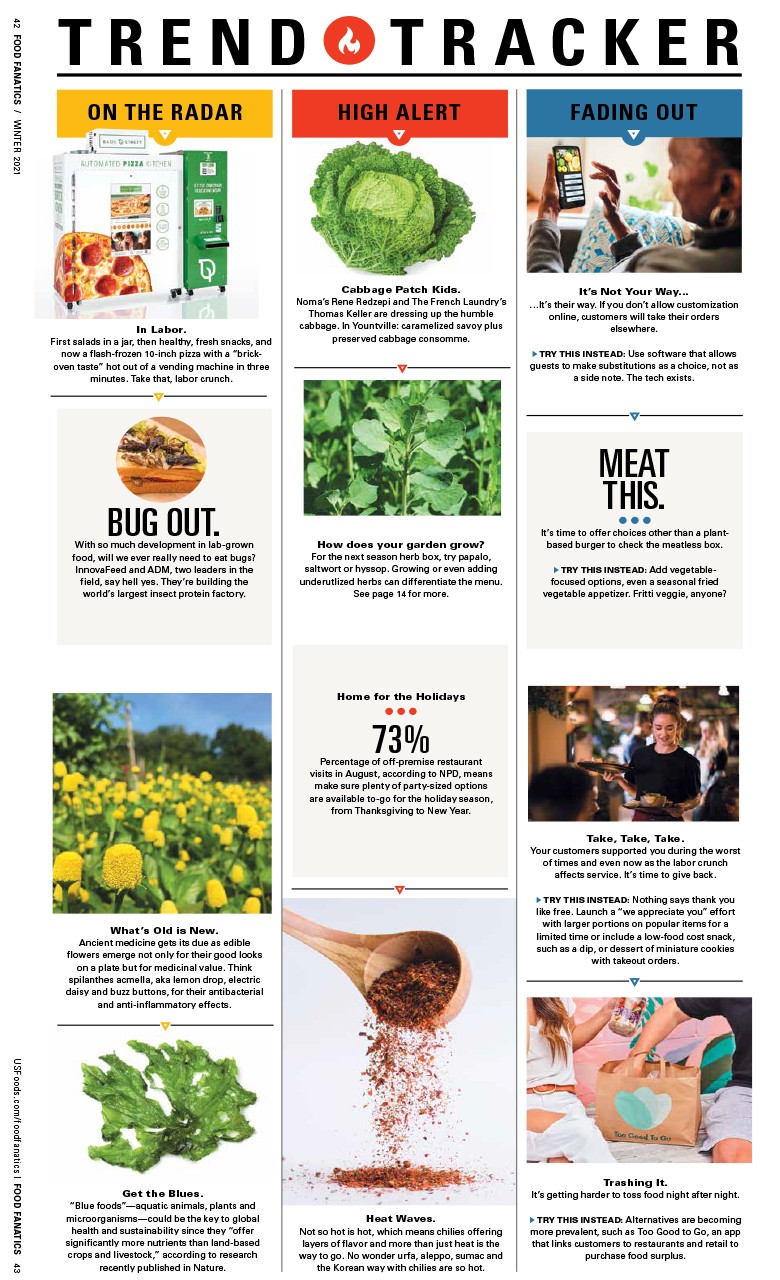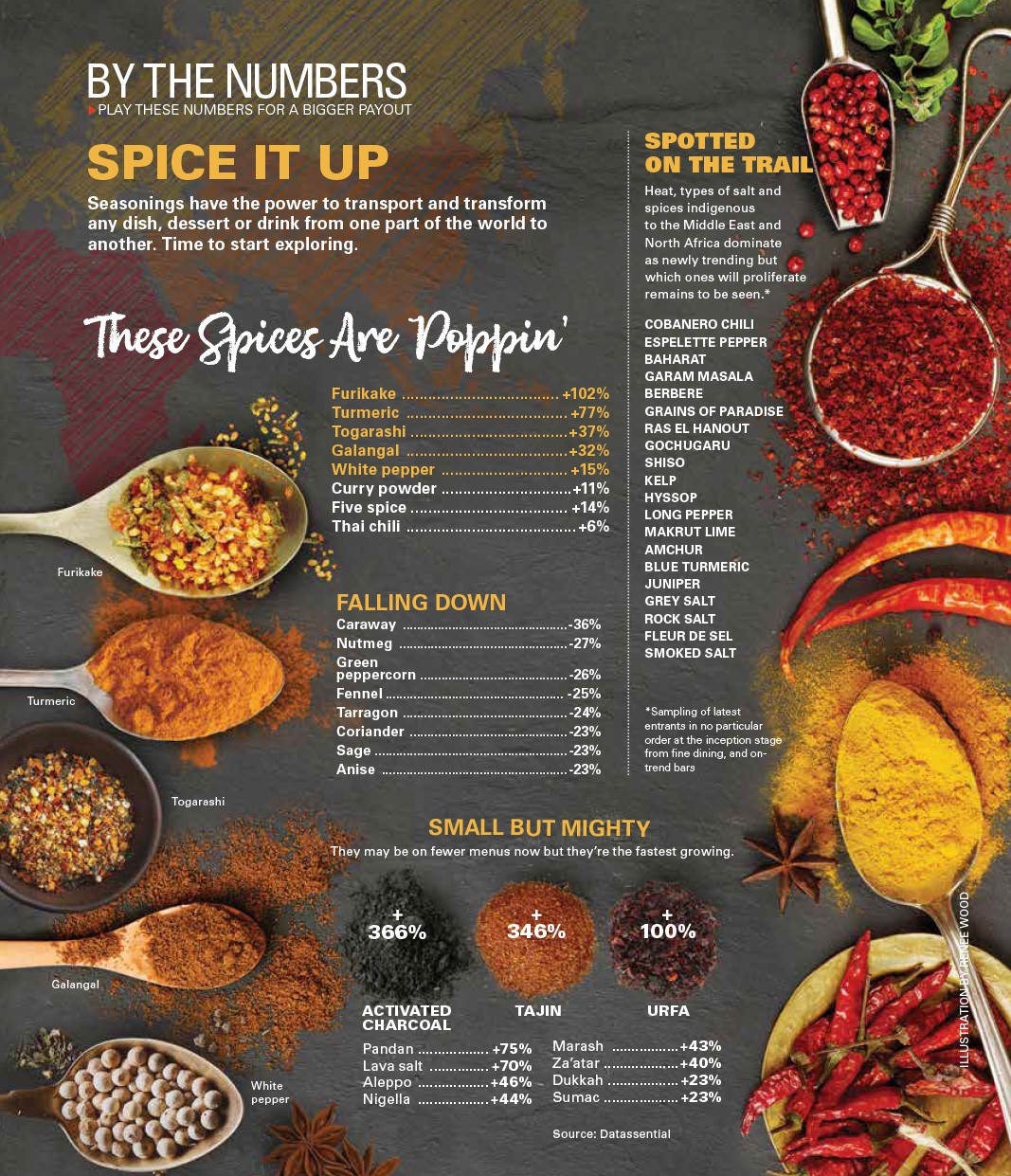TURN OVER A NEW LEAF
Underappreciated herbs can change the course of a menu
 Incorporating fresh herbs into dishes has long been a vital component. What’s Sunday Sauce without basil, or a mojito without mint? Most restaurant folks wouldn’t want to know. But for those looking to push boundaries, less familiar herbs that excite and entice now trend with diners more than ever.
Incorporating fresh herbs into dishes has long been a vital component. What’s Sunday Sauce without basil, or a mojito without mint? Most restaurant folks wouldn’t want to know. But for those looking to push boundaries, less familiar herbs that excite and entice now trend with diners more than ever.
For Mister Mao chef Sophina Uong, fresh herbs regularly keep her New Orleans diners on their toes. “We often use herbs to cool or refresh the palate between savory and fiery bites,” she explains. Her Vietnamese salad, served from a roving cart, features rau rum and sawtooth. Indian curry leaves fold into oils for major flavoring power. “Our guests appreciate our varied cooking styles and are excited by what is new for them to try,” she says.
At Gage & Tollner in Brooklyn, executive pastry chef Caroline Schiff gets particularly excited by herbs that bring everything up a notch. “Thyme is lovely, but lemon thyme is even more fun,” she explains. “Anise hyssop is just bonkers – the leaves are naturally sweet and taste like Good & Plenty.” Many of her dishes feature one seasonal ingredient and an unexpected corresponding flavor or texture, folded into a somewhat traditional pastry format. “I want diners to think they know what they’re getting. But then, at first bite, to blow their minds just a little bit,” she says. “That’s what great desserts should do.”
Cut Waste
- ❱ Incorporate a specific type for each part of the menu, from beverages to desserts
- ❱ Promote as a theme
- ❱ Infuse herbs in simple syrup for cocktails or toss with sugar for desserts
- ❱ Plant your own underutilized herbs
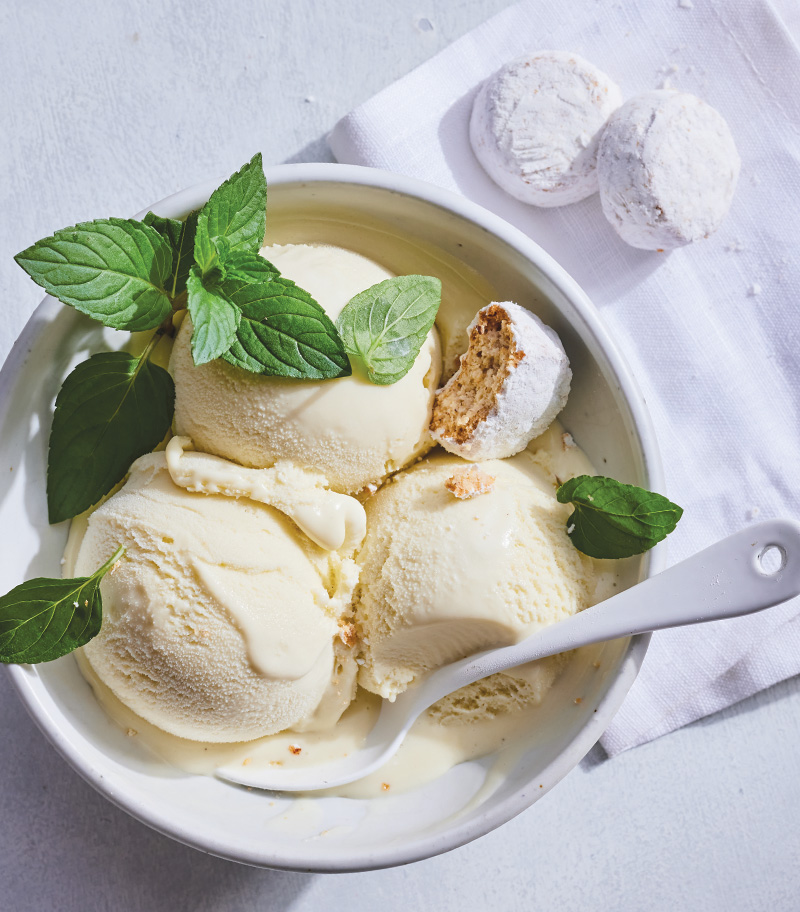
For New York mixologist Daniel Bedoya, unexpected herbs help him blend creativity and authenticity in every cocktail. “Using new ingredients not only sharpens you as an artist, but also brings that X factor guests are looking for,” he says. Bedoya uses natural sweeteners like honey and palm sugar to gently enhance the inherent sweetness of featured spirits. Adding fresh vegetables and herbs then deepens flavor and aroma, while also contributing immune-boosting health benefits. Unexpected herbs like tarragon and mint dipped in edible gold bring on intrigue. “New Yorkers love to be in-the-know of new trends,” he says. “If they walk out of your bar having learned something new or wanting to experiment with an ingredient, they’ll come back for more.”
Not sure where to start? These six next-generation herbs guarantee such taste bud explosions.
Recipes from this article:
CARAWAY THYME
The particularly heady aroma of this dense, leafy thyme holds its own amongst strong flavors and sharp aromas – so much so that it’s also called herba-barona or “herb of beef,” for how well it seasoned meat while pushing the boundaries of freshness during medieval times. Fold it into breads and stewed meat dishes for a fragrant burst of robust caraway notes. In sweet applications, infuse it into buttery shortbread dough, along with zest from citrus, for an alluring result. “No one can ever put their finger on it,” Schiff promises. “It’s perfect after a big, rich meal with espresso.”
CHOCOLATE MINT
This one is a bit of an enigma. A hybrid of water mint, spearmint and orange mint, some think the chocolaty aroma is a hoax coaxed out of our natural association of mint and chocolate. “I, however, am a true believer,” says Schiff. “Sniff it side by side with conventional mint. I promise, it’ll blow your mind.” She particularly loves to make Chocolate Mint Ice Cream during the holidays where, infused into dairy, it produces an almost indiscernible pale green hue. “You’re completely blindsided when at first bite there’s a whiff of dark chocolate,” she says. “It’s like a natural thin mint.”
Uong utilizes its underlying citrusy notes in both sweet hot chocolate and savory eggplant purées. Try it in lemonade, stuffed in the glass of a mint julep or infused into sugar for use as cocktail rimmer, too. Infuse into sugar and use in brownies or chocolate cake for even more intrigue.
LEMON THYME
Blending thyme’s savory backbone with a zesty citrus aroma, this hybrid brightens many a winter dish. Add to the bouquet garni for stuffed poultry. Throw in braises or roasted meats. “I love using it in cobbler doughs, like the Blueberry Lemon Thyme Cobbler in my book,” says Schiff. “It’s great paired with vanilla in pound cakes and makes a wonderful, infused ice cream as well.”
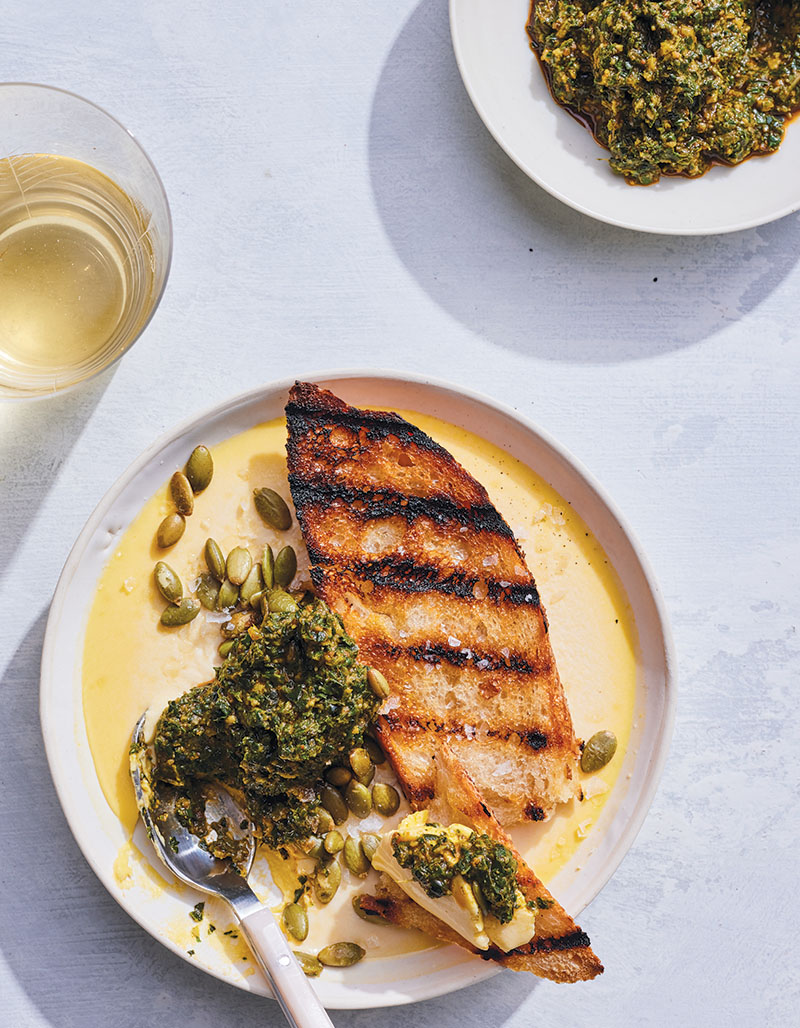
LEMON VERBENA
The long and feathery leaves of this bright and bushy plant are ready for action mid-spring. “It makes the best simple syrup for lemonade, sweet tea, meringue and margaritas,” notes Uong of its zingy, citrusy bang. Schiff adds that infused simple syrup is a must for marinating stone fruits and reviving berries. Try it in a refreshing winter granita, too. “It’s so crazy lemony. It really knocks my socks off,” she says.
PINEAPPLE SAGE
This herb and its accompanying flowers are best used fresh. The name of the herb is deserved, giving its heady pineapple scent, ideal for building on the actual fruit. The flavor, however, is subtle, similar to an herby green taste – not assertive like everyday sage. Toss the leaves in salads or rub them into sugar as a garnish for cocktails or topping for desserts.
“ I WANT DINERS TO THINK THEY KNOW WHAT THEY’RE GETTING. BUT THEN, AT FIRST BITE, TO BLOW THEIR MINDS JUST A LITTLE BIT.”
—Caroline Schiff, executive pastry chef at Gage & TollnerSCENTED GERANIUM
This perennial is best known as adding color to flower beds, but it’s the leaves that make it intriguing. Scented geranium, which includes apple, orange, strawberry, rose and peppermint, perfume foods with their namesake scent. Lindsey Shere, the founding pastry chef at Chez Panisse, was known for lining the loaf pan with rose geranium leaves to scent the batter for pound cakes. Any type of geranium leaves can be steeped in simple syrup or rubbed into sugar to release the oils.
TARRAGON
Bedoya often reaches for tarragon instead of mint. In his El Aguacate cocktail, tarragon-infused cachaça mixes with aloe liqueur and gets rounded out by vanilla-infused sugar, clarified lime and fresh avocado. Shaken, poured and topped with subtle golden mint, the herbs “bring this soft minty punch with really cool licorice layers,” he says.
Uong relies on tarragon’s licorice notes to underscore her unctuous herb jam, where earthy green vegetables, spicy ginger and bright sherry vinegar push mint and cilantro further to the flavor edge. Folded into pastas, added to eggs or dolloped onto savory breads, it unfolds layers of flavor that astound and intrigue. Add cream to the jam for a sauce that brightens chicken, swirl into hummus for a flavor dip, or toss with lemon potatoes for even more full-flavor applications.
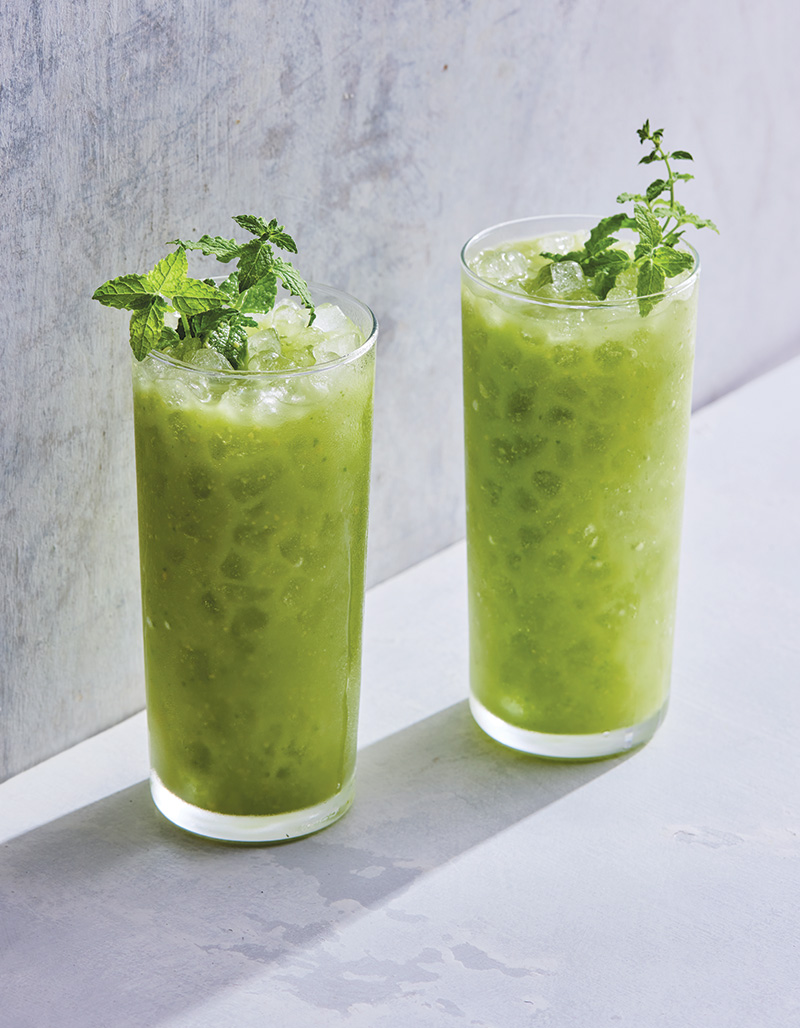
ALL THE BASILS
Only using basil in tomato sauce or salads? Then you’re greatly underestimating its value, says Uong. “Basil piccolo has tiny beauty and intense delivery. Lemon basil in bacon, corn and clam chowder makes you feel like it’s not cheat day. Thai basil is divine in stir-fries with oyster sauce, fish sauce, sugar and lime juice...” she says. Want to go really out-of-the-box? Try Christmas basil. The large, glossy leaves offer a refreshing bite to root vegetable dishes and hefty winter salads. Add even more fruity herbaceous notes to mulled wine, cider and cold cocktails.


